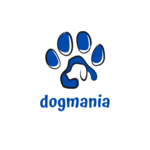The Ultimate Guide to Grain-Free Dog Food in 2024
As pet owners become more conscious of their dogs' health and well-being, grain-free dog food has gained significant popularity. This dietary choice, which excludes grains like wheat, corn, and rice, is believed to offer various health benefits for dogs. In this ultimate guide, we'll delve into the reasons behind the grain-free trend, the benefits and potential drawbacks, how to choose the best grain-free dog food, and whether this diet is suitable for your furry friend.
Why Grain-Free?
Benefits of Grain-Free Dog Food
2. Enhanced Nutritional Value: Grain-free dog foods often contain higher levels of protein and essential nutrients, which can support muscle development and overall vitality. These foods are also likely to have fewer fillers and more whole ingredients.
3. Better Skin and Coat Health: Dogs with grain allergies might experience skin irritations or a dull coat. A grain-free diet, rich in omega-3 and omega-6 fatty acids, can improve skin health and result in a shinier, healthier coat.
4. Weight Management: Grain-free dog foods can help with weight control. Many grains are high in carbohydrates, which can contribute to weight gain. By eliminating grains, these foods may help dogs maintain a healthier weight, especially when combined with regular exercise.
5. Energy Levels: Dogs on a grain-free diet often exhibit higher energy levels. The high-quality proteins and fats found in grain-free foods provide sustained energy, making your dog more active and playful.
Potential Drawbacks
1. Nutritional Imbalance: Not all grain-free dog foods are created equal. Some might lack essential nutrients or include non-grain fillers that do not offer significant nutritional benefits.
2. Cost: Grain-free dog foods tend to be more expensive than traditional options due to their higher quality ingredients.
3. Heart Health Concerns: The FDA has investigated potential links between grain-free diets and canine dilated cardiomyopathy (DCM), a condition affecting the heart muscle. While the evidence is not conclusive, it's a factor to consider and discuss with your veterinarian.
Choosing the Best Grain-Free Dog Food
1. Check the Ingredient List: Look for foods where the primary ingredients are high-quality proteins, such as chicken, beef, or fish. Avoid products with excessive fillers, artificial preservatives, or by-products.
2. Consult Your Veterinarian: Before making any significant changes to your dog's diet, it's crucial to seek advice from a veterinarian. They can provide personalized recommendations based on your dog's health, age, and breed.
3. Read Reviews and Do Research: Research different brands and read reviews from other pet owners. Look for brands with a reputation for quality and safety.
4. Trial and Error: Introduce new foods gradually to monitor how your dog reacts. If you notice any adverse reactions, consult your vet and consider trying a different brand or formulation.
5. Consider Your Dog’s Specific Needs: Factors like age, activity level, and health conditions should influence your choice. For instance, active dogs might require higher protein content, while older dogs might benefit from specific nutrients that support joint health.
Is Grain-Free Right for Your Dog?
Signs That Grain-Free Might Be Beneficial
Monitoring Your Dog's Health
conclusion
Grain-free dog food can offer numerous benefits for many dogs, including improved digestion, better skin and coat health, and increased energy levels. However, it’s not a one-size-fits-all solution. Carefully consider your dog's specific needs and consult with a veterinarian before making any dietary changes. By doing thorough research and monitoring your pet’s health, you can make an informed decision that supports a long, healthy, and happy life for your furry friend.



leave me your thoughts here